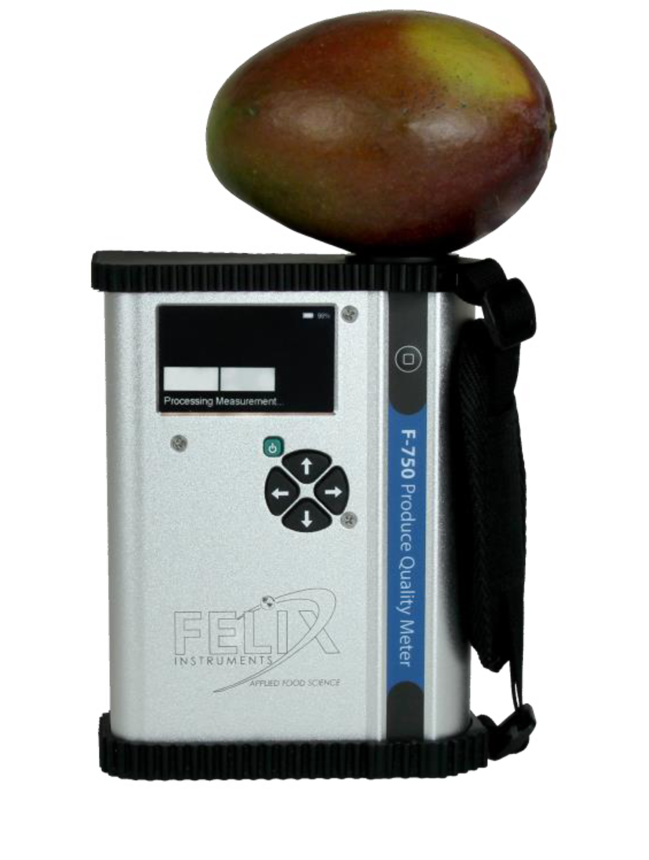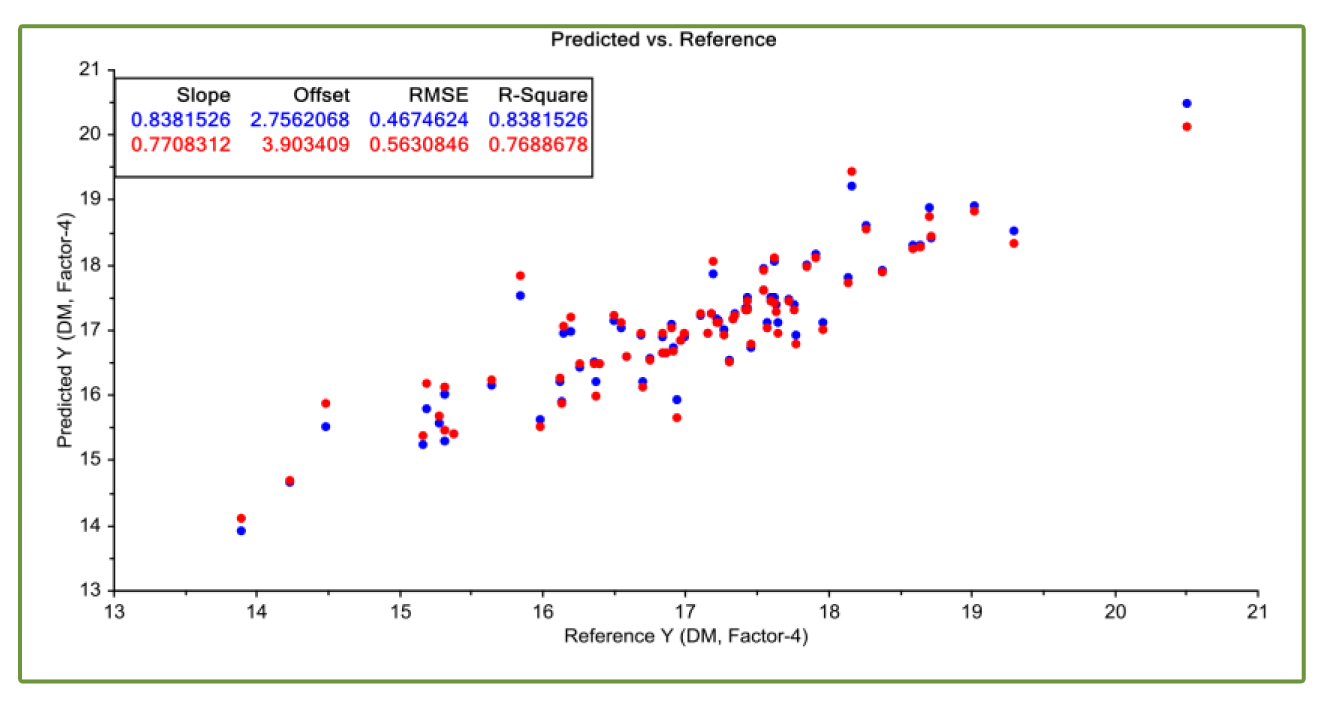
Non-destructive measurements of Dry Matter in Kent mangoes
High levels of Dry Matter are positively correlated with consumer preference, and therefore harvest time should be managed to maximize Dry Matter.
Historically, Dry Matter has been destructively measured—harvesting a core from a mango and determining the difference between fresh and dry mass. Near Infrared (NIR) technology, utilized by the F-750 Produce Quality Meter, can nondestructively assess dry matter content. To determine the effectiveness and viability of the F-750 Produce Quality Meter in measuring Dry Matter in mangoes, a study was carried out sampling 96 Kent mangoes. Applying the methods described in the Felix Instruments Mango Standard Operating Procedure, reference values were correlated with the spectral data collected with the F-750. Results show that the F-750 Produce Quality Meter precisely and non-destructively measures Dry Matter in mangoes, with a calculated root mean square error of prediction of 0.60 Dry Matter.

Materials and Methods
In July 2015, 78 Kent mangoes ranging in size and maturity were selected and measured using an F-750 Produce Quality Meter. Next, these same mango regions were destructively measured for Dry Matter (DM) using methods described in Felix Instruments Mango Standard Operating Procedure (SOP). These reference values were analyzed alongside the spectral data collected with the instrument using the Model Builder software included with the F- 750. A spectral range of 800-975 nm was used with the Model Builder software to detect correlations between the spectral signal and corresponding DM values. The resulting data were analyzed for linearity, root mean square error, and leave-one-out cross validation error to determine the applicability and accuracy of the created model. A second population of 18 Kent mangoes were measured the following day and used as an independent validation set.
Results and Discussion
Results show that the F-750 Produce Quality Meter precisely and non-destructively measures Dry Matter in mangoes. A strong correlation between spectral data and collected reference values is illustrated by a model prediction R2 of 0.83 (Figure 2). Root Mean Square Error of Prediction (RMSEP) describes the average uncertainty of a model in predicting the dry matter content of a new sample. The Mango model RMSEP value of 0.60 (%DM) demonstrates the accuracy of the model, with an F-750 value of 15% DM corresponding to an actual dry matter value of 14.4-15.5% DM.
Figure 1. Prediction error for mangoes using the F-750. Specimen most strongly correlated to the calculated trend line show the greatest accuracy of prediction (Red: Independent Validation Prediction; Blue: Training Set Prediction).
Conclusions
The F-750 Produce Quality Meter accurately predicted Dry Matter in Kent mangoes. Other tests and research findings have demonstrated the viability of using the F-750 to measure other important internal fruit metrics such as total soluble solids content and acidity with the F-750. Similar results are expected with other mango varieties
Further Reading and Supporting Science
Subedi, P., Walsh, K., & Owens, G. (n.d.). Prediction of mango eating quality at harvest using short-wave near infrared spectrometry. Postharvest Biology and Technology, 326-334.
Subedi, P., & Walsh, K. (n.d.). Assessment of sugar and starch in intact banana and mango fruit by SWNIR spectroscopy. Postharvest Biology and Technology, 238-245.
This application note is provided, with permission, courtesy of Felix Instruments

